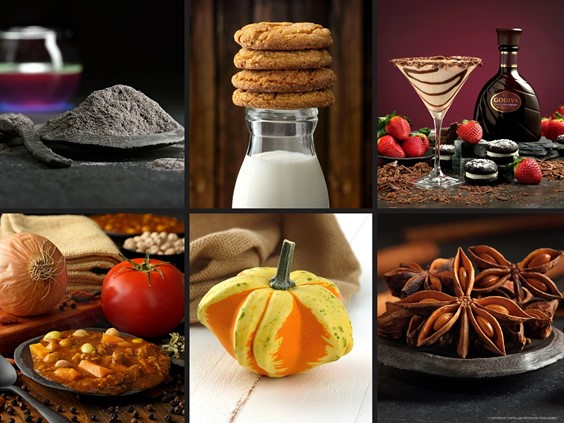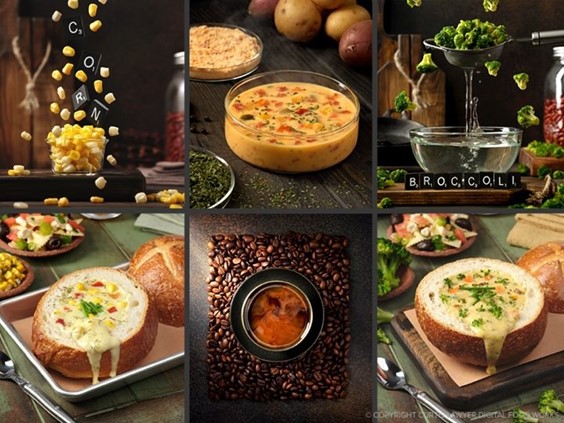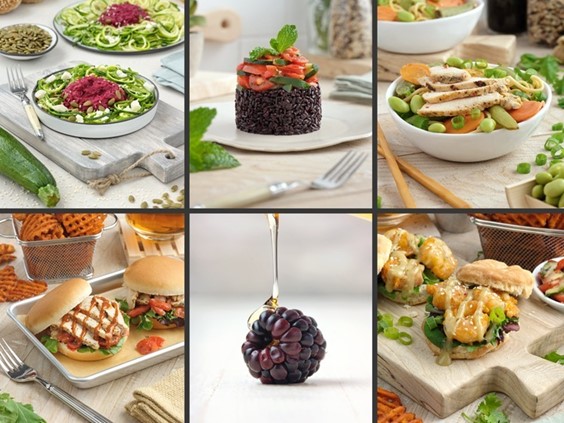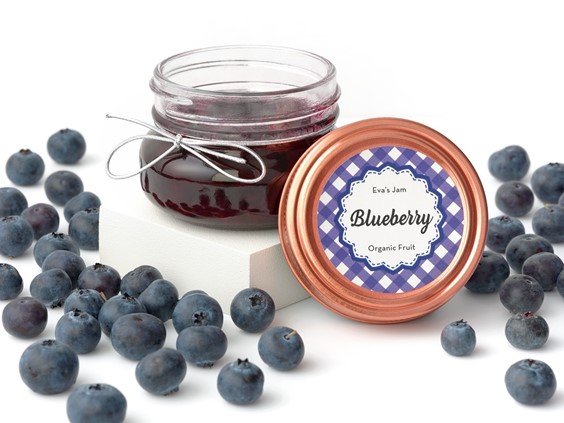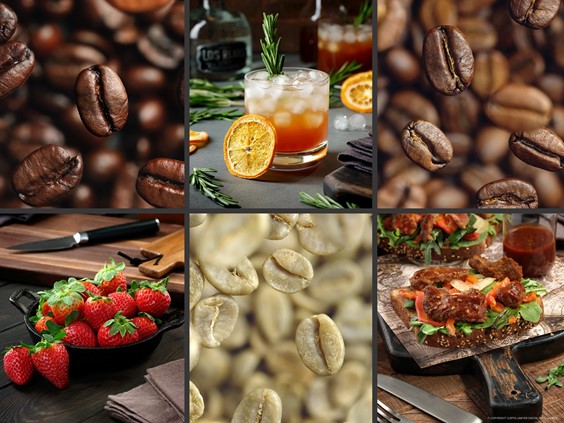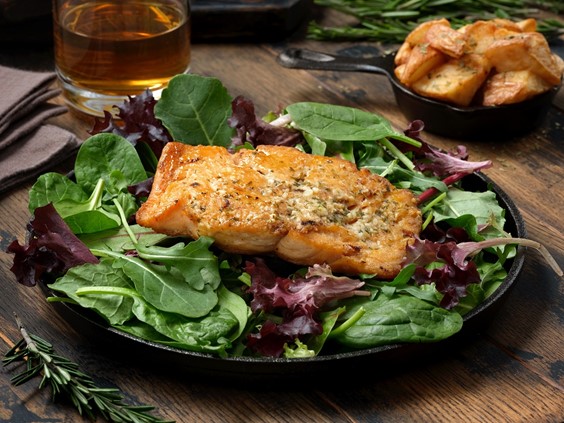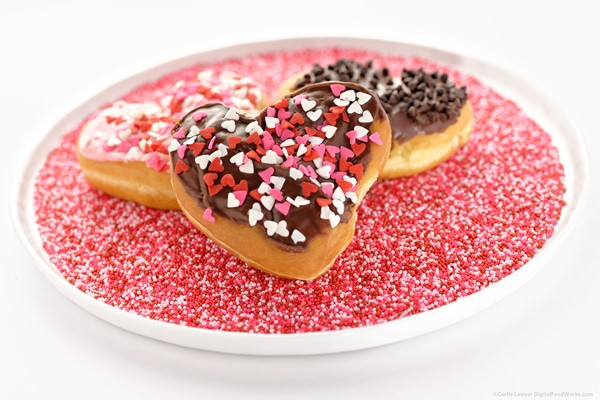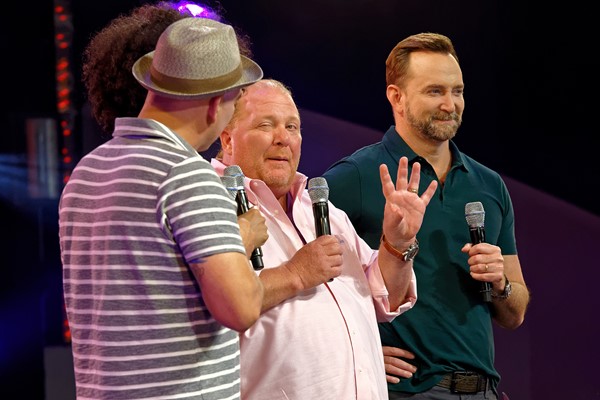Edible Natural Blue, Residual pH Levels, and Focus Stacking
January 7, 2019Food Photography

Is there any way to add a natural blue or purple color to food and beverages? As it turns out, there is! A little Asian Pigeonwing Tea will turn water (and presumably other things) blue (or purple, if your pH balance is too low).
First — what exactly are we looking at? A couple of years ago, a friend of mine taught some fun classes about painting with spices. One of the questions that came up was "is there any way to make blue?" — as you can imaging, spice colors tend to lean heavy into just one side of the color wheel — red, orange, yellow, green, and brown — but no blue.
Well I kept researching and eventually found a caffeine-free herbal tea commonly called "Butterfly Pea Flower Tea" or "Asian Pigeonwing Tea" — which is an infusion of the clitoria ternatea plant and dried lemongrass. Flavor-wise, it's earthy and really similar to a fine green tea. Color-wise, a little tiny amount — goes a long way.
In it's dry powder form, it's kind of gray, and it really likes getting airborne with the slightest wafting of air! So it's not the easiest stuff to work with. This series of photos was to feature "colorful things in a small black dish"… but I didn't realize just how gray colored the tea powder was until I shot the photo.

Asian Pigeonwing Tea isn't really blue or purple in it's powder form. You can see little flecks of dried green plants if you get really close, but no indication of the amazing blue tone that's produced when water is added.
I thought for a second, and then came up with the idea of pouring a small amount of the prepared liquid tea in a glass cup behind the small dish of tea powder. This would lend some much needed color to the photo.
It's not that there's anything wrong with a lot of smooth dark gray tones and no color in a photo… I quite like the "all gray" version — but the whole idea of the series was that there would be a little pop of color in (or around) the black ceramic dish.
I made up about 8oz of the tea and discovered an interesting (and possibly useful) side-effect. When cleaning up just the smallest amount of the gray powdered tea from the counter with a paper towel and little water… the whole towel became an amazing shade of blue! We're talking about just a few specs of tea powder here! Color-wise… it is really potent stuff.
However, in the cups — I was getting something more like purple. Did I use too much tea powder? Well, as it turns out… this tea is also very susceptible to pH levels. The paper towel and water had very "nominal" levels of pH (around 7) — while the cup I was using had been washed with a common dish detergent a couple of times… just prior to that, they were used to hold a citrus-based fruit and Ouzo dessert. (Which is why fine wine connoisseurs request virgin glasses when tasting wines… even after being used just once… you would have to put glasses and cups in something like a medical-grade autoclave to really get them clean.)
Getting back to the photo and my slightly purple tea… the original concept for the three photos was to go high contrast and very dark — I had been using just one light and some bounce cards here and there. I placed the tea where I wanted it in the photo — but it was just at the location where the main light source started to fall off. The result was something that looked more like squid ink in a cup, than what I was going for.

The glass cup of purple-blue tea was placed behind the powdered tea, in an area where the light was starting to fall off. There wasn't enough illumination around to let you see what color the tea is.
Adding a very narrow beam fresnel light, pointing straight down into the little cup, at around 30 watts filled the cup with a really nice purple glow. This is pretty close to what the tea looks like when just holding it up to an ambient room light blub.

There's two diagrams here. The first is a side view showing that a narrow beam light was placed directly above the small cup of liquid tea, in order to light up just what was in the cup, and nothing else. The bottom half is looking down on the set-up which only uses one strobe in a strip box to light the entire scene.
Naturally, because the little cup has glass on all sides (except for the top where you pour the tea in) — and because of the way reflection and refraction works — there's a little bit of room for the light to escape at the bottom of the cup. This created a blue halo (sort of like an inverse shadow... because the liquid is brighter than the surrounding area), at the bottom of the cup. Bringing the cup in closer to the tea powder and the spoons hid that a little bit.
And even though the transition area between the tea powder and the glass is really cool, I felt like the cup was still a little too "in focus". The main object here is supposed to be the tea powder.

The transition area that leads from the in-focus powdered tea, to the back of the pile where the focus is softer, right into the fully out of focus liquid version of the tea, is really cool. There's only about 3 inches between the dish of tea powder and the cup of purple tea.
For the next shot (and this is the one I like the best, especially at a 4:3 ratio), I moved the cup back a little bit, lowered the camera angle, and opened the aperture on the lens a good bit more (I was at f/13 on a medium format 44x33mm sensor). This made the glass with the purple tea look great… but the filed of focus on the tea was so shallow — it just wasn't pretty.

The shallow depth of field that is a result of opening up the aperture... is too narrow. It doesn't look like enough of the tea powder is in focus, in order for it to be the center of attention. In this case, the whole entire dish is the subject of the photo.
Closing the lens down more really wasn't the answer here, because even at a maximum f/32 the "whole" pile of powdered tea would still not be in focus… and lens diffraction would be an issue. (In really simple terms, and only because this post is already too long… closing the lens down too much will result in decreased detail and sharpness.)
Focus stacking was the ultimate solution here again. I set up a 12 photo sweep from the front of the powdered tea dish, to just past the middle of the tea dish. The "in focus" parts of those 12 photos were then combined into one photo in post-production and a 13th photo of the purple tea glass was masked in from the first photo in that series, where the main focus was on the very front on the pile.

The final "hero" shot is actually comprised of 13 different photos! Please click on this one and view it larger! There's such a great detailed contrast to the tea powder in front and a smoothness to the liquid tea in the back — that you can only see at full size.
The focus stacked photo is really a neat shot — because of just how smooth that purple tea cup looks in the background (it's really only about 6 inches or 15cm behind the dish), and how much detail is retained in the Asian Pigeonwing Tea Powder.
It's such an amazing opportunity to get a chance to "work the photo" like this — and match what you see in your head. The experience always produces information and knowledge that will be used on other photos down the road!

